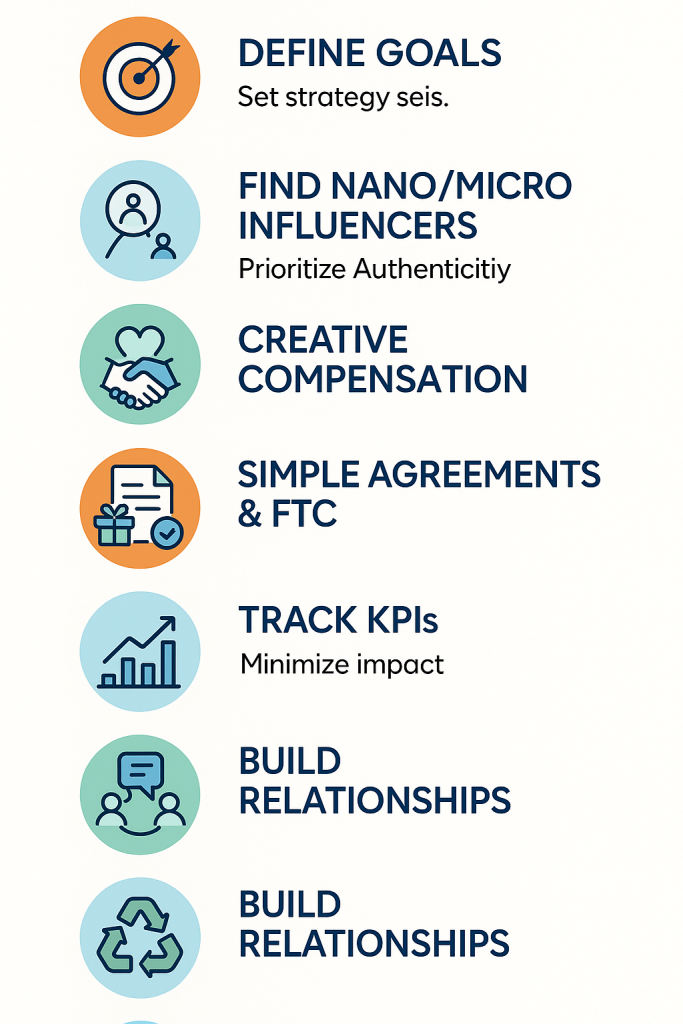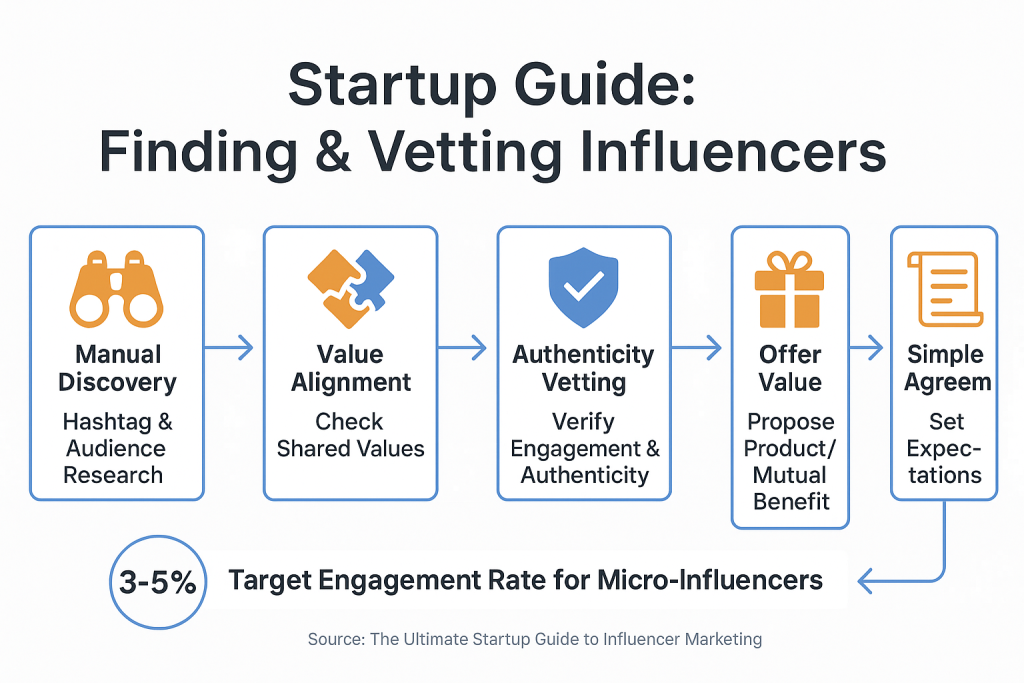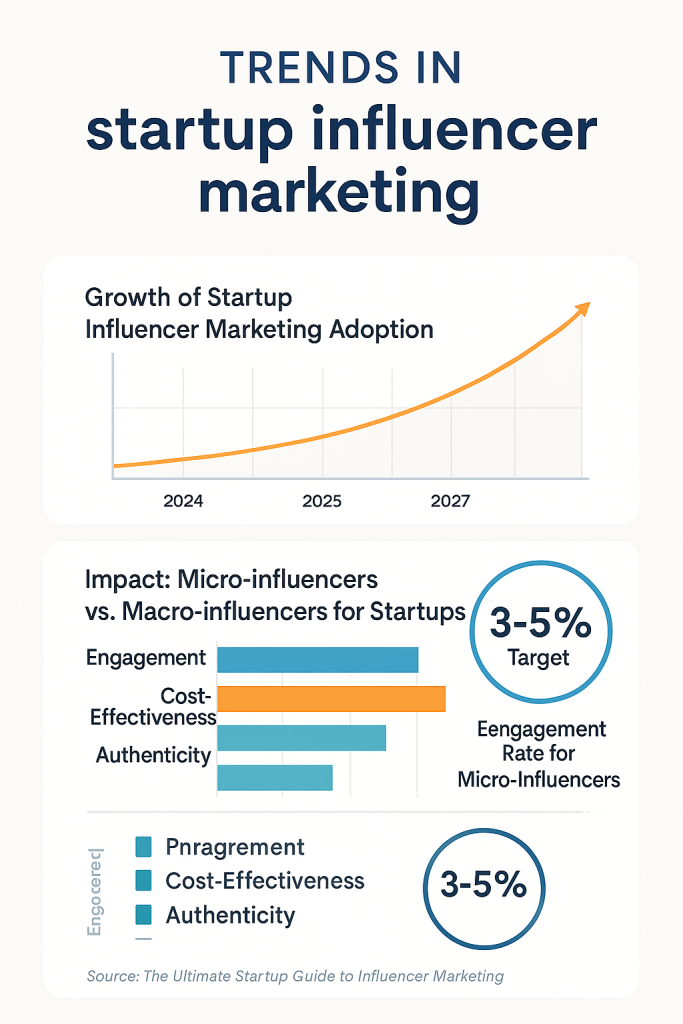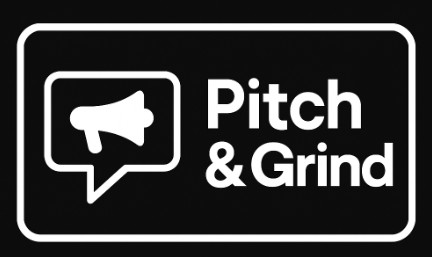For startups navigating the initial phases of growth, influencer marketing offers distinct advantages that traditional advertising or marketing channels often cannot match, especially when resources are scarce.
Here is a calulator to find ROI for a given influencer campaign:
- Cost-Effective Brand Building: Compared to the high costs of traditional advertising (think pay-per-click campaigns or media buys), influencer marketing, particularly with micro and nano-influencers, can be significantly more economical. Startups can achieve substantial brand visibility and reach without a hefty upfront investment.
- Building Trust and Social Proof Quickly: New ventures inherently lack the established reputation of larger companies. Influencers, by their nature, have already built trust with their audience. An endorsement from a credible influencer acts as powerful social proof, lending your new brand instant credibility and making potential customers more receptive to your message.
- Reaching Hyper-Targeted Niche Audiences: Startups often serve specific niche markets. Influencers, especially smaller ones, typically cultivate highly engaged communities around particular interests or demographics. This allows startups to directly reach their ideal customer profile with precision, avoiding the wastage associated with broader marketing campaigns.
- Generating Authentic User-Generated Content (UGC) from Day One: Authentic content is gold for startups. Influencer collaborations naturally lead to the creation of UGC, which can be repurposed across your own marketing channels (website, social media, email). This content often feels more genuine and relatable to Homo sapiens than brand-created assets.
- Driving Early Feedback and Product Iteration: Influencers, particularly those genuinely interested in your product or service, can provide invaluable early feedback. They can highlight what resonates, what needs improvement, and how your offering is perceived by their audience, guiding your product development and iteration cycle.
- Accelerating Early Adopter Acquisition: Influencers can be instrumental in reaching and converting early adopters—individuals who are eager to try new products and often become vocal advocates. Tapping into an influencer’s community can kickstart this vital acquisition phase.
- Community Building Foundation: Influencers can help sow the seeds for your brand’s community. Their endorsement can draw initial members, and their content can spark conversations, helping you build an engaged group of users and advocates around your startup.

Understanding Influencer Tiers: A Startup’s Perspective
While the article you analyzed mentions micro/nano influencers, it’s vital for startups to understand why these tiers are often the most strategic starting point and how to think about scaling.
| Influencer Tier | Typical Follower Count | Why It Matters for Startups | Considerations for Startups |
|---|---|---|---|
| Nano | 1k – 10k | Highest engagement rates, strong personal connection with audience, very niche, most affordable (often product-only). | Scalability can be an issue; requires managing many relationships for broad reach. |
| Micro | 10k – 100k | Excellent engagement, niche expertise, more accessible than larger influencers, good balance of reach and authenticity. | Still requires vetting; compensation may involve a mix of product and a modest fee. |
| Macro | 100k – 1M | Broader reach, professional content creators, can lend significant credibility. | Higher cost, potentially lower engagement rates, may feel less “authentic” to some audiences. |
| Mega/Celebrity | 1M+ | Massive reach, mainstream awareness. | Prohibitively expensive for most startups, risk of overshadowing the brand, lower engagement. |
For startups, nano and micro-influencers are generally the sweet spot. Their audiences tend to be more tight-knit and trusting, leading to higher conversion rates on recommendations. They are also more likely to be passionate about genuinely innovative products, even from unknown brands.

Finding & Vetting Influencers
For a startup, finding the right influencers isn’t just about follower counts; it’s about finding genuine partners who align with your mission and can speak authentically to your target audience, often on a shoestring budget.
- Beyond Paid Tools: Manual & Creative Discovery:
- Hashtag Research: Go deep on niche hashtags relevant to your industry, product, or the problem you solve. Look for individuals consistently posting quality content and engaging authentically.
- Audience Exploration: Who are your ideal customers following and engaging with? Check the comments sections of competitor posts or complementary brands.
- Community Engagement: Participate in relevant online communities (Reddit, Facebook groups, niche forums). Identify influential voices and active members who align with your brand.
- Look for “Proto-Influencers”: Identify individuals who are passionate experts or creators in your niche but may not yet have a large “influencer” following. Early partnership can be highly valuable.
- Emphasis on Shared Values & Genuine Belief:
- Does the influencer’s content and tone resonate with your brand’s values?
- Do they seem genuinely interested in the type of product/service you offer? Generic influencers are less effective.
- A startup needs advocates, not just advertisers. Seek influencers who could become true fans.
- Evaluating for Long-Term Ambassadorship:
- While one-off campaigns have their place, think about identifying influencers who could become long-term brand ambassadors.
- Consistent, repeated exposure from a trusted source is more powerful than a single mention.
- Approaching Influencers with Limited/No Budget:
- Compelling Mission: Clearly articulate your startup’s vision and why it matters. Passion can be infectious.
- Product as the Star: If you have a fantastic product, offer it for free with no strings attached initially. A great product can win them over.
- Early Access & Exclusivity: Offer influencers early access to new features or products. Make them feel like insiders.
- Future Potential: Be transparent. If you can’t pay now, explain your growth plans and how they could benefit from a long-term partnership if successful (e.g., future paid campaigns, affiliate models).
- Personalize Your Outreach: Generic DMs are easily ignored. Reference their specific content, explain why they are a good fit, and what’s in it for them (even if not monetary).

Vetting Checklist for Startups:
- Audience Demographics: Do their followers match your target customer profile? (Ask for a media kit or use platform analytics if available).
- Engagement Rate: More important than follower count. (Likes + Comments) / Followers. Look for rates above 3-5% for micro-influencers.
- Comment Quality: Are comments genuine, or spammy/bot-like?
- Content Authenticity & Quality: Does their content feel real? Is it well-produced for their niche?
- Past Partnerships: Have they worked with similar brands? How did they present them?
- FTC Compliance: Do they properly disclose sponsored posts? This indicates professionalism.

Startup-Friendly Compensation & Partnership Models
Startups must be creative and flexible with compensation. The good news is that many influencers, especially in the nano and micro tiers, are open to models beyond direct payment.
- Product Seeding (Gifting):
- How it works: Send your product to influencers for free, with no obligation to post.
- Startup Advantage: Extremely cost-effective (cost of goods + shipping). Great for generating organic mentions and UGC if the influencer genuinely likes the product.
- Making it Effective:
- Personalize: Include a handwritten note. Explain why you chose them.
- No Strings Attached (Initially): Pressure to post can backfire. If they love it, they’ll likely share.
- Follow Up: Gently follow up to see if they received it and gather feedback.
- Affiliate Marketing:
- How it works: Provide influencers with unique trackable links or discount codes. They earn a commission on sales they drive.
- Startup Advantage: Performance-based, so you only pay for results. Low upfront risk.
- Setting it Up:
- Use simple affiliate platforms (e.g., Gumroad, Refersion, Rewardful, or even manual tracking for very early stages).
- Offer a competitive commission rate.
- Gifting + Small Stipend:
- How it works: For micro-influencers who have established rates, offer your product plus a small fee to guarantee a post or specific deliverables.
- Startup Advantage: Secures dedicated content while keeping costs manageable.
- Long-Term Ambassadorships:
- How it works: Develop ongoing relationships with a few key influencers. This could involve regular product drops, consistent affiliate commissions, and potentially tiered rewards as your startup grows.
- Startup Advantage: Builds deeper advocacy and consistent brand messaging. More cost-effective than multiple one-off campaigns.
- Offering Equity or Advisory Roles (Use with Extreme Caution):
- How it works: For very select, high-impact, or celebrity-level influencers whose involvement could significantly move the needle.
- Startup Advantage: Can secure a powerful, long-term advocate with vested interest.
- Considerations: This is complex. Involves legalities and dilutes ownership. Typically only viable for influencers with a proven track record of significantly impacting business growth or brand perception in your specific industry. Consult legal and financial advisors.
- Cross-Promotion / Mutual Benefit:
- How it works: Partner with influencers who are also building their own brand or platform (e.g., a new podcaster, a blogger growing their audience). You promote them, they promote you.
- Startup Advantage: Cost-free, leverages shared growth goals. Works best when audiences are complementary.
Setting Objectives & Measuring ROI
For startups, ROI isn’t always about immediate sales. Early influencer campaigns might focus on building foundational brand assets and achieving specific early traction goals.
- Startup-Specific Key Performance Indicators (KPIs):
- Brand Awareness: Reach, impressions, mentions.
- Audience Growth: New social media followers, newsletter sign-ups, waitlist additions.
- Engagement: Likes, comments, shares, saves, click-through rates (CTR) on links.
- Website Traffic: Referral traffic from influencer links.
- User-Generated Content (UGC): Number of pieces of content created, quality of UGC.
- Lead Generation: Demo requests, free trial sign-ups.
- Community Growth: New members in your online community (if applicable).
- Qualitative Feedback: Comments and messages indicating brand perception, product interest, or suggestions.
- Early Adopter Acquisition: Number of new users/customers directly attributable to campaigns.
- Product Validation: Positive comments about product features or use cases.
- Lean Measurement: Tools & Tactics for Startups:
- UTM Parameters: Add these to any link you give influencers to track traffic and conversions accurately in Google Analytics or similar platforms.
- Google Analytics: Monitor referral traffic, conversions, and on-site behavior from influencer campaigns.
- Platform Analytics: Use built-in analytics on Instagram, TikTok, YouTube, etc., to see post performance.
- Unique Discount Codes/Landing Pages: Assign unique codes or landing pages per influencer to track sales or sign-ups.
- “How Did You Hear About Us?” Field: Add this to your signup or checkout process.
- Manual Tracking: For very small campaigns, a simple spreadsheet can track influencer activity, content produced, and initial engagement metrics.
- Connecting Influencer Activity to Early Traction Goals:
- If your goal is to validate a product idea, track comments and direct messages for sentiment and feature requests.
- If your goal is to build an email list for launch, focus on sign-ups from influencer landing pages.
- If your goal is to drive downloads for a new app, track installs via unique links.
Crafting the Startup Influencer Agreement
Even for unpaid collaborations or product seeding, a simple agreement is vital to set expectations and protect your startup. It doesn’t need to be a 50-page legal document, but it should cover the basics.
- Key Elements for a Simple Agreement:
- Parties Involved: Your startup name and the influencer’s name.
- Campaign Overview: Briefly describe the campaign and its goals.
- Deliverables (Be Specific):
- Number and type of posts (e.g., 1 Instagram Reel, 2 Instagram Stories).
- Content requirements (e.g., mention key message, show product in use).
- Call to action (e.g., link in bio, swipe-up link).
- Any “do’s and don’ts.”
- Content Usage Rights:
- Can you repurpose their content on your own channels (website, social media, ads)? For how long?
- Specify if you have rights to modify the content.
- Disclosure Requirements (FTC Guidelines):
- Mandate clear and conspicuous disclosure (e.g., #ad, #sponsored, #startupnamepartner). This is legally required and crucial for transparency. Emphasize adherence to Federal Trade Commission (FTC) regulations.
- Timelines:
- When should content be submitted for review (if applicable)?
- When should content go live?
- Compensation (if any):
- Detail the product provided, fee, affiliate terms, etc.
- Exclusivity (Optional):
- Can they work with direct competitors during or shortly after the campaign?
- Reporting (Optional but Recommended):
- Will the influencer provide performance metrics (reach, engagement) after the post?
- Importance of FTC Guidelines from the Outset:
- Failing to disclose sponsored content can lead to penalties for both the brand and the influencer.
- It also erodes trust with the audience. Make this non-negotiable.

